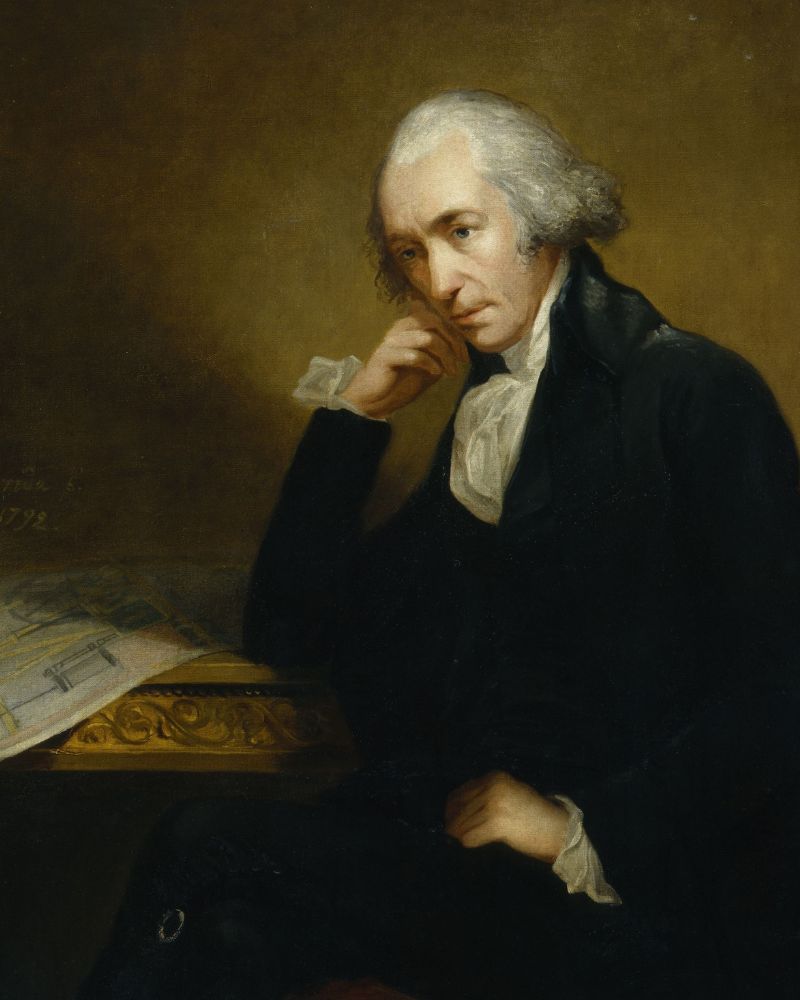James Watt: The Man Who Powered the Industrial Revolution

James Watt (1736–1819) was a Scottish inventor and mechanical engineer whose improvements to the steam engine transformed industry, transportation, and daily life. His innovations helped spark the Industrial Revolution, changing how goods were produced and how people traveled. Although Watt did not invent the steam engine, his modifications made it far more efficient and practical, leading to widespread adoption in factories, mines, and transportation.
The Need for a Better Steam Engine
Before Watt’s improvements, early steam engines, such as Thomas Newcomen’s 1712 design, were inefficient and consumed large amounts of coal. These engines were mainly used to pump water out of mines but were too slow and costly for broader industrial use. Watt recognized the need for a more efficient steam engine and set out to improve its design.
Watt’s Revolutionary Improvements
1. Separate Condenser (1765)
Watt’s most important innovation was the separate condenser. In earlier engines, steam was condensed in the same cylinder where it was produced, wasting energy. Watt’s new design used a separate chamber to condense steam, which:
- Reduced energy waste
- Increased efficiency by 75%
- Made the engine faster and more powerful
2. Rotary Motion (1781)
To expand the steam engine’s use beyond mining, Watt developed a rotary motion system, allowing engines to power machines, mills, and factories instead of just pumping water. This made steam engines practical for industrial production, revolutionizing manufacturing.
3. The Steam Engine with Governor (1788)
Watt also introduced the centrifugal governor, an automatic device that regulated the engine’s speed, making it safer and more reliable. This allowed steam engines to be used in a variety of industries.
Impact of Watt’s Steam Engine
1. The Industrial Revolution
Watt’s steam engine became the driving force behind the Industrial Revolution (1760–1840). Factories no longer relied on water power, allowing industries to grow rapidly. This led to:
- Mass production of goods
- Lower costs and increased availability of products
- Urbanization, as people moved to cities for factory jobs
2. Revolutionizing Transportation
Watt’s engine powered steamships and locomotives, transforming global travel and trade. Steam-powered trains and boats reduced travel time, connected distant cities, and boosted economies.
3. Growth of Mining and Agriculture
Steam engines made coal and iron mining more efficient, providing materials for construction, railroads, and machinery. In agriculture, steam-powered machines increased food production, supporting population growth.
Watt’s Lasting Legacy
James Watt’s contributions changed the world. His name lives on in the watt (W), the unit of power, honoring his impact on engineering and energy. His work laid the foundation for modern engines, power plants, and industrial machines, shaping the technological world we live in today.
Without Watt’s innovations, the Industrial Revolution would have been slower, and the modern world as we know it—filled with factories, machines, and global trade—might have taken much longer to develop. His steam engine truly powered the future.